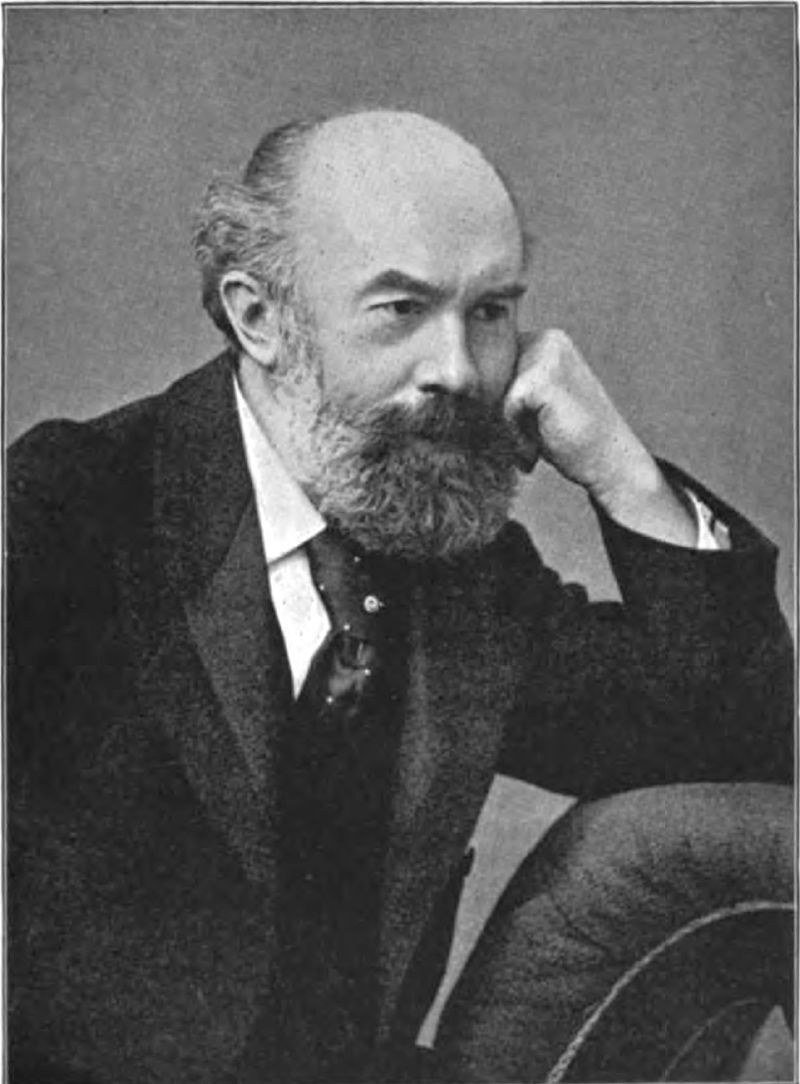<Back to Index>
- Composer and Organist John Stainer, 1840
- Organist George Clement Martin, 1844
PAGE SPONSOR
Sir John Stainer (6 June 1840 - 31 March 1901) was an English composer and organist whose music, though not generally much performed today (with the exception of The Crucifixion, still heard at Passiontide in many Protestant churches of the former British Empire), was very popular during his lifetime. His work as choir trainer and organist set standards for Anglican church music which are still influential. He was also active as an academic, becoming professor of music at Oxford. According to Peter Charlton's biography, Sir Arthur Sullivan's tribute to Stainer was blunt and memorable: "He is a genius".
Stainer was born in Southwark, London, on 6 June 1840. As a boy, he sang in the choir of St Paul's Cathedral (a house in the cathedral's present choir school is named after him). At the age of 16, he was appointed by Sir Frederick Ouseley to the post of organist at the newly founded St. Michael's College, Tenbury. Because of a childhood accident, Stainer had lost the use of one eye; for a brief period in 1875 he lost that of the other too.
In 1860 he became organist at Magdalen College, Oxford, moving to St Paul's Cathedral in 1872. Thirteen years afterwards, he was awarded an honorary degree by Durham University; and he became professor of music at Oxford University in 1889. He conducted pioneering research into early music, notably the output of Guillaume Dufay, then scarcely known even among experts. He also contributed a small treatise, Harmony, and another, Composition, to the famous series of Novello musical primers. For budding organists he wrote a primer called, simply, The Organ, which continues to have a following. In recognition of his services to British music, he received a knighthood from Queen Victoria in 1888.
While on holiday in Italy, Stainer died in Verona of heart failure on 31 March 1901, at the age of 60. His funeral was held on 6 April at St Cross Church, Holywell, Oxford, and the surrounding streets were filled with mourners.
Stainer's output of sacred music was extensive, including the Passion cantata or oratorio The Crucifixion (1887), the Sevenfold Amen (this latter piece especially admired by the lexicographer Sir George Grove), and numerous hymn tunes, including "Cross of Jesus", "All for Jesus" (both from The Crucifixion) and "Love Divine". His evening canticles (Magnificat and Nunc dimittis) are occasionally revived, as are the anthems How beautiful upon the mountains and I saw the Lord.
His work as composer has lost most of its fame since his death. The Crucifixion is one of the few major works of his that is still regularly performed. It is often given in English churches during Holy Week and forms part of the repertoire of numerous choirs. He also made a lasting contribution to the music of Christmas in his Christmas Carols New and Old (1871), produced in collaboration with the Revd. H. R. Bramley, which marked an important stage in the revival of the Christmas carol. The book includes Stainer's arrangements of what were to become the standard versions of "What Child Is This", "God Rest Ye Merry Gentlemen", "Good King Wenceslas", "The First Nowell" and "I Saw Three Ships", among others.

Sir George Clement Martin MVO (11 September 1844 - 21 February 1916) was an English organist, who served at St Paul's Cathedral.
He was born in Lambourn, Berkshire on 11 September 1844. Footman's "History of Lambourn Church" describes him as "the only famous man to come from Lambourne" (sic). He has a memorial plaque in Lambourn church near the organ.
He studied organ under John Stainer, supposedly cycling from Lambourn to Oxford everyday for his studies.
He was a composer, mostly of church music, which included a Te Deum in A, performed at the Thanksgiving Service held on the steps of the Cathedral in Queen Victoria's Diamond Jubilee year. He was given a knighthood in the Diamond Jubilee Honours.
He also wrote a primer on "The Art of Training Choir Boys" which became a standard work on the subject.
Martin transcribed Sir Edward Elgar's 1897 work "Imperial March" for organ, in which form it is still frequently played by many concert organists, often as an encore. It is, in this form, possibly better known than in the original orchestral arrangement, which (outside England) is only occasionally performed - organist Simon Preston's 1964 recording on the organ of Westminster Abbey is one well known version.
He is perhaps best known for his hymn tune "St. Helen" (commonly used for the hymn "Lord, enthroned in heavenly splendour").